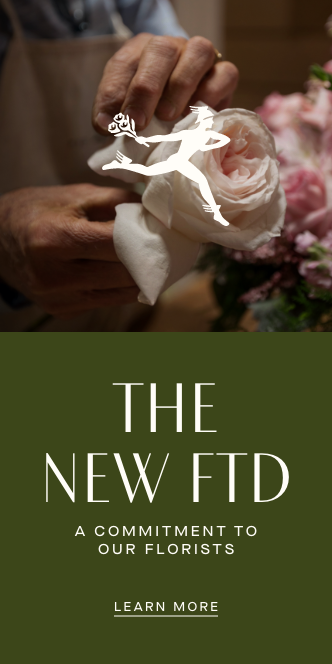Floral sales for Valentine’s Day 2025 showed strong demand, impulse buying, and last-minute surges.
Full Article Here.
Source- FloralDaily.com
Strong demand, impulse buying, and last-minute surges
A Flourishing Valentine’s Day for the US Floral Industry
“Valentine’s Day remains one of the most significant sales periods for the floral industry, with consumer demand surging across retail, mass-market, and wholesale channels. Despite economic concerns and price sensitivity, floral sales in 2025 were robust in the U.S., demonstrating the industry’s resilience amid logistical and seasonal challenges. Some retailers reported record-breaking sales while others maintained consistent sales compared to 2024”, Joost Bongaerts concludes after speaking to numerous retailers across the country. Besides being CEO of Florabundance, Inc., a specialty floral wholesaler based in Carpinteria, California, shipping nationwide since 1994, Joost also serves as a director of Cal Flowers, has been an ambassador for That Flower Feeling since its inception, and actively supports its national campaign and fundraising efforts, advocating for the joy and benefits of flowers in daily life. In this article, he shares his key findings.

Sales performance
“Overall, floral sales were strong, with some retailers experiencing their best-ever Valentine’s Day sales. Retail florists across multiple states reported substantial growth in online and phone orders, complemented by a surge in last-minute walk-in sales. Mass-market and supermarket florists capitalized on impulse buying through large, strategically placed floral displays, enticing shoppers to make convenient last-minute purchases. Wholesale growers saw strong demand for specialty flowers like Ranunculus, Anemones, and Heather, though supply limitations prevented further expansion.”
Best-selling flowers
Roses remained the top seller, dominating retail and mass-market channels, with mixed rose arrangements particularly popular, he continues. “Tulips gained traction as a preferred alternative, especially among eco-conscious buyers. Specialty flowers such as Heather, Seeded Eucalyptus, and Ranunculus saw rising demand, particularly among floral designers and event florists.”
Supply chain and logistics
“Product availability was mostly stable, though Ecuador’s rose crop lagged slightly, leading to minor shipment delays. Some supply chain disruptions occurred, including late truck arrivals in select markets, but these had minimal impact on overall sales. Delivery logistics remained a critical challenge, as florists struggled to secure enough reliable drivers to meet order fulfillment demands.”
Consumer trends and spending habits
What were the trends and spending habits this year? “Valentine’s Day floral deliveries were more evenly distributed throughout the week, with notable order increases from February 11-13, though February 14 remained the busiest day. Pickup orders surged significantly, with some florists reporting a 50%+ increase in last-minute pickups, signaling evolving consumer behavior. Mass-market floral sales thrived due to high-visibility in-store displays, driving impulse purchases in supermarkets and grocery stores. Average order values (AOV) increased, indicating that despite economic concerns, consumers were willing to invest in premium floral arrangements.”
Weather and regional impact
Severe weather played a role in sales trends and logistics, Joost points out. “Particularly in regions affected by winter storms across the country and in Southern California, the season’s largest rainstorm and subsequent mudslides disrupted sales just before Valentine’s Day. Cold and overcast conditions in key growing regions affected flower production, especially for crops timed for the holiday.”
The big picture
“Valentine’s Day continues to be a crucial event for the floral industry, driving nearly $3 billion in U.S. flower sales, according to the National Retail Federation. While roses remain the top choice, consumer interest in tulips and specialty flowers is growing. The industry must navigate ongoing challenges, including unpredictable weather, supply chain inefficiencies, and labor shortages, to fully capitalize on future demand.”
Supermarkets and mass-market retailers played an essential role in capturing last-minute sales, using large-scale floral displays to drive impulse purchases, he continues. “Looking ahead, International Women’s Day (March 8) is expected to be a key sales driver, particularly benefiting Ecuador’s delayed rose crop. As consumer behaviors shift, florists and growers must remain adaptable, leveraging trends such as extended delivery windows, increased pickup orders, and sustainable floral choices to maximize future sales opportunities.”

The importance of That Flower Feeling
Joost also stresses the importance of That Flower Feeling. “With an estimated U.S. population of approximately 347 million people (Worldometers.info), the floral industry has a vast audience to engage. In 2022, about 22% of Americans purchased fresh flowers or plants as gifts for Valentine’s Day (SAFNow.org). Applying this percentage to the current population suggests that approximately 76 million U.S. consumers are likely to buy fresh flowers during the Valentine’s Day period. Financially, U.S. consumers planned to spend around $2.5 billion on flowers for Valentine’s Day in 2025 (Statista.com), underscoring the holiday’s economic significance in the floral market. Valentine’s Day, along with Mother’s Day, accounts for a substantial portion of annual flower sales in the U.S., reinforcing the seasonality of the floral market (ProducePay.com). However, to create year-round demand, the industry must actively promote everyday flower consumption.”
According to Joost, That Flower Feeling (TFF) plays a crucial role in this effort by positioning flowers not just as holiday gifts but as an essential part of self-care and daily joy. “The industry’s collective support for TFF can help drive advertising efforts that increase flower sales and foster higher floral consumption beyond major holidays. By encouraging consumers to embrace flowers in their daily lives, the national ad campaign benefits growers, shippers, floral supply companies, wholesalers, retailers, and online flower companies, contributing to a more stable and thriving floral market.”
For more information:
Joost Bongaerts
Florabundance
joost@florabundance.com
www.florabundance.com





















